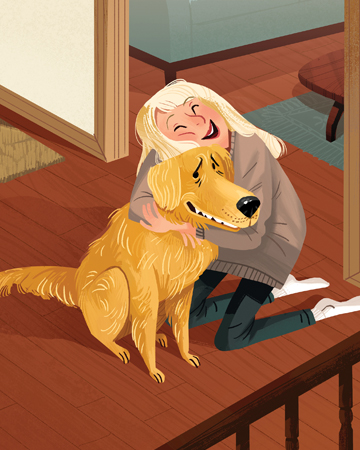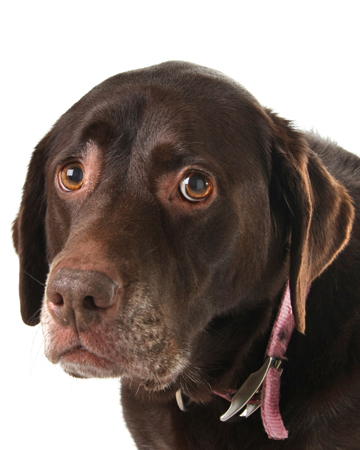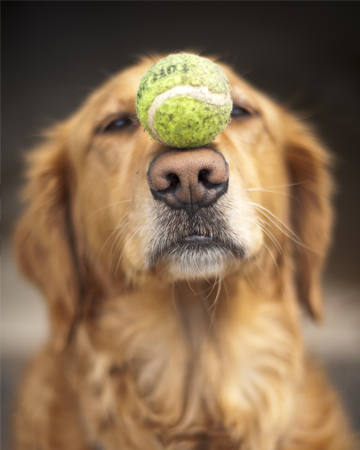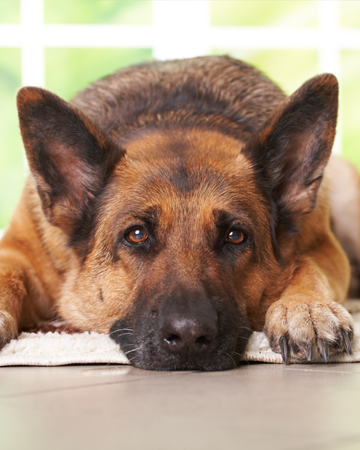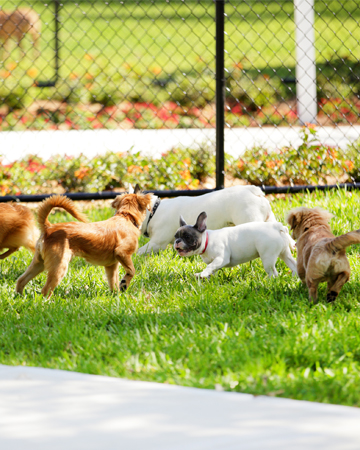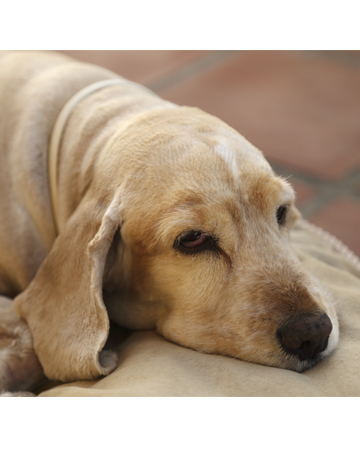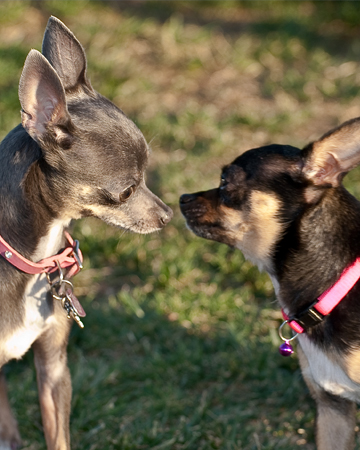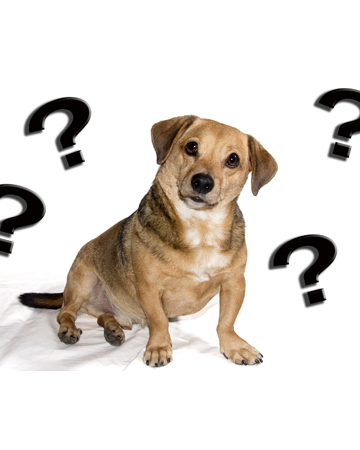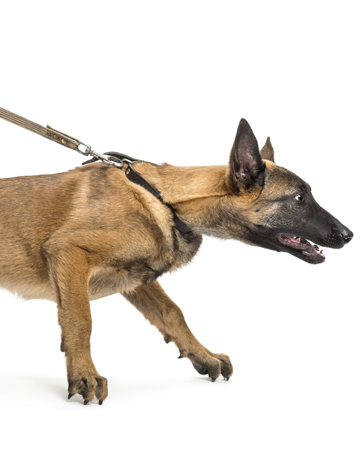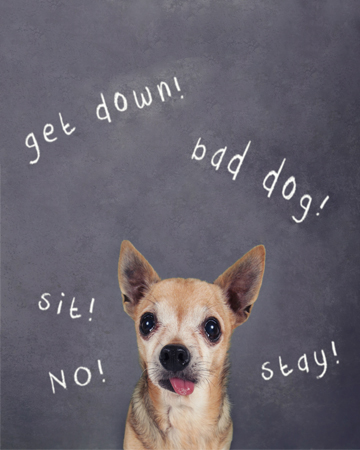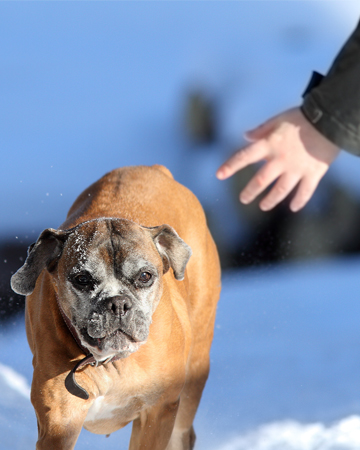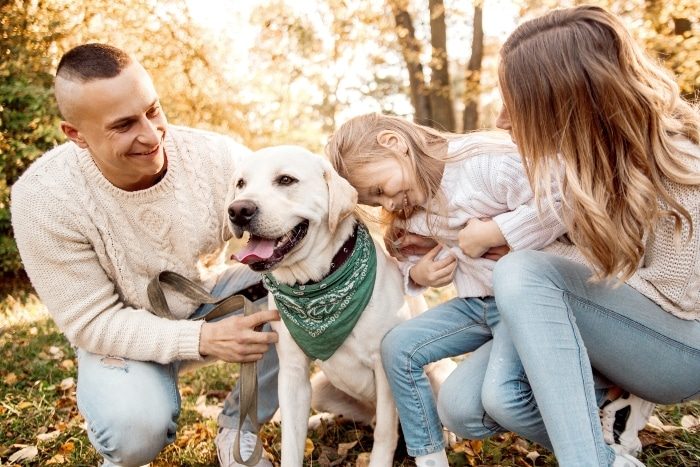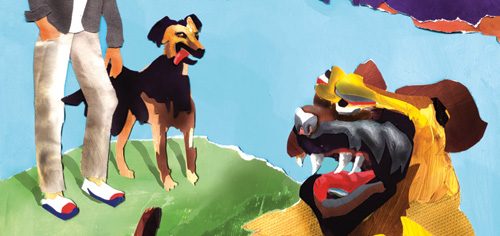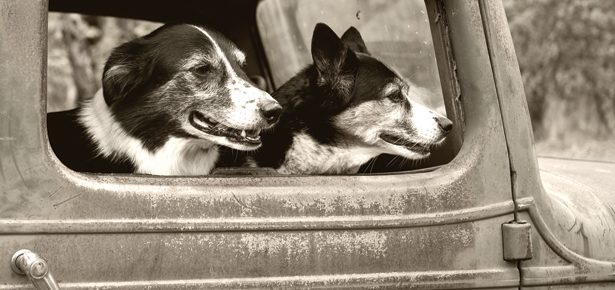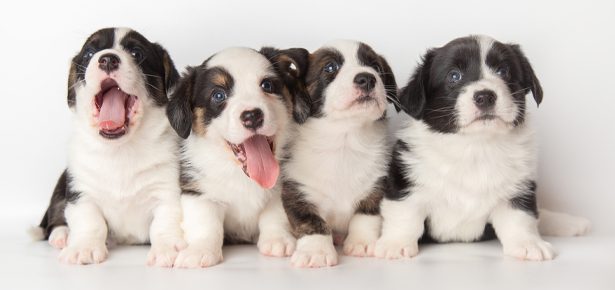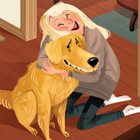
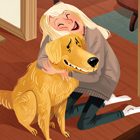
12 Things Humans Do That Annoy Dogs
Those twelve annoying human habits are common breeches of canine custom. Might you be guilty of a few?
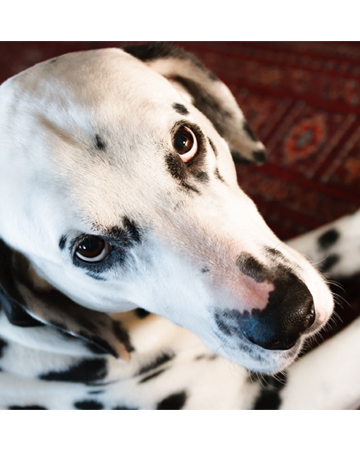
#1. Staring!
To a dog, stares often translate to challenge. Just watch your dog when he spots a squirrel—her level of fixation isn’t friendly interest. The last thing you should do is stare too long at a dog. Though you’ll probably have no problem with your own dog (note they still likely won’t love it), with others it might be interpreted as a challenge. Instead, ask people to look into your dog’s eyes for only a few seconds then break off. And never stare into the eyes of a dog who seems worried, edgy or aggressive!
#2. Hugs
Your dog probably won’t mind regular hugs from you. But many dogs get annoyed at tight hugging, especially from strangers or children. Unlike primates, canines have no history of grasping each other to show affection. In fact, when a dog puts its paws or body onto another dog, it is usually an attempt at domination or control. So unless your dog eagerly enjoys being hugged, tell friends and family to opt for gentle petting instead.
#3. Yelling
Yelling is interpreted by your dog as angry barking, which to her means trouble. As a training technique, it works poorly to shut down bad behaviours and only serves to scare, confuse or agitate. Instead of yelling, stay calm and think tone. A deep tone to your voice means, “Hey, I’d like your attention,” while a lighthearted tone means “Good job!” or “Let’s play.” By adjusting vocal tone instead of volume, you’ll get your dog’s attention without annoying or scaring her.
#4. Teasing
Children can be especially guilty of teasing a dog. Barking back at them behind a fence, pulling on tails or ears, or even chasing after or wrestling with an unwilling dog are certainly annoying and can make dogs shy, insecure or even aggressive. Moving a dog’s dish while he eats, playing keep-away without ever letting the dog have the toy, or even endless laser pointer sessions can drive a dog bonkers, so lay off the teasing and be sure to reward your dog quickly after he performs a behaviour correctly.
#5. Too Much Alone Time
Dogs are social animals and you and your family members comprise your dog’s pack. Dogs left alone in a home or yard for ten or more hours each day can develop a myriad of behavioural and psychological issues, including separation anxiety, excessive barking or digging, destructive behaviour, or escaping. They can even lose housetraining skills and in the process trash your home.
Your dog is a member of your family and, as such, needs to spend time with you. If you work during the day and no one else can be home, ask a friend or neighbour to stop by once each day to take her for a walk. If that’s not possible, be sure to spend quality time with her when you return. A walk, a round of fetch—whatever makes her happy. When you are home, let your dog be around you. Interaction with others is critical to your dog’s wellbeing, so, however you do it, get her some company.
#6. Crowded Dog Parks
Crowded Dog Parks Many dogs get annoyed or defensive when thrown into a park filled with too many strange dogs. Think about suddenly being thrown into an elevator with twenty clowns and you’ll get the idea.
The same goes for doggie daycares. If your dog is sociable, she should get along with six or seven other dogs provided the space is large enough and the dogs well mannered. But increase the numbers or reduce the space and you’ll almost certainly see stress like pinned back ears, low tail carriage, yawning, avoidance, and even the occasional fight.
Is your dog sociable and physically capable of dealing with roughhousing? If so, try a park or daycare with a reasonable number of dogs (about one dog per 150 square feet). If she’s shy, opt instead for socializing her with a few dogs she knows or dogs who are gentle and laidback. Avoid parks or daycare with high densities of frenzied dogs.
#7. Interrupted Sleep
I was dreaming, dude! Even the nicest dogs hate to be awakened suddenly. Older dogs especially, who tend to sleep more deeply, and those whose impaired hearing might not allow them to hear someone’s approach can get scared by the sudden presence of a person touching them.
Let your dog wake up naturally, without touching them or sneaking up. Children especially should be taught not to disturb a dog while he sleeps. You wouldn’t like being shocked out of a good dream. Why would your dog? If you do need to wake your dog, do so slowly, quietly, and gently.
#8. Strange Dogs
Your dog will be wary of new animals entering your home. It’s a result of his natural, normal instinct to protect his home turf. But some people, thinking that all dogs instinctively love other dogs, let friends bring their dogs over for impromptu visits. This can annoy even the most congenial dog and might incite a skirmish.
Instead, first introduce any strange dog while on a walk. Then bring the new dog into your home on leash and have them both perform down/stays for a few minutes. Reward with treats then let them calmly interact. Pick up toys and chews beforehand to minimize arguments. If you have a fenced yard, let them then go out and burn off some social steam.
#9. Changes to Routine
Stick to the script. Dogs depend on routine. Feeding and elimination schedules, walks, playtime—your dog engrains these into her brain and expects them to happen each day without much variation. If you randomly change her dinner time, take her out later than usual, or even leave or arrive unpredictably, it can stress your dog and result in behavioural problems. As best as you can, stick to the same times, the same diet, the same ritual play activity—whatever is working. On days off, try not to sleep in too late. And, even if you’re tired, take her for that walk each morning before you go to work.
#10. Tight Leash
One aim of every dog trainer is a loose-leash walk, which shows that the dog is paying attention and focused. But most dogs today seem to drag their people down the street, the leash stretched tight behind them. This means that not only is the dog not paying attention, but also has constant tension on his collar or harness, which can lead to health problems. Though the dog technically creates the tension, it nevertheless annoys her.
Teach loose leash walking by changing the direction and speed of your training walks often and unpredictably. As soon as your dog seems to lose focus, do an about-face and walk the other way, keeping the leash as loose as possible. Slow to a crawl, speed up, circle left or right— whatever she isn’t expecting. When she responds to these position and speed changes, reward her with a tidbit that can be eaten on the move, with her beside you. You’ll soon have a focused, happy dog at the end of a loose leash.
#11. Inconsistency
Make up your mind already. You often invite your Golden Retriever to jump up on you when you get home from work. But when your mother comes over to visit, you chastise the dog for doing the exact same thing to her. This discrepancy confuses dogs, who can’t figure out what you want them to do. To avoid this, decide exactly on what you do and don’t want your dog to do, then stick to it. If jumping is not allowed, then the behaviour should never be tolerated. If begging is undesirable, never offer food from your plate. Be as consistent as possible with the rules.
#12. Inadvertently Aggressive Greetings
Are you greeting or attacking? Most people do not know how to properly greet a dog. They crouch, stare, stretch their hand out, and talk in bizarre baby talk. This is a threatening way to greet a dog. First, the person’s crouch mimics a predator’s pre-attack posture. The stare is the second threat, only to be topped by the outstretched hand reaching into their space, begging for a nip. Not only is this an annoying way to greet a dog, it’s possibly dangerous.
The best way to greet a strange dog is not at all. Instead, greet the person with the dog. While doing so, the dog will sniff you and interpret that his person seems to be at ease with you. If the dog seems at ease and his person says it’s okay, you can then casually reach down and give the dog a quick pet on the head. That’s it.
Join the newsletter and never miss out on dog content again!
"*" indicates required fields
By clicking the arrow, you agree to our web Terms of Use and Privacy & Cookie Policy. Easy unsubscribe links are provided in every email.
